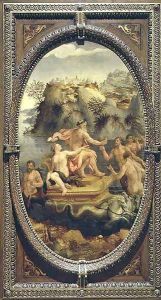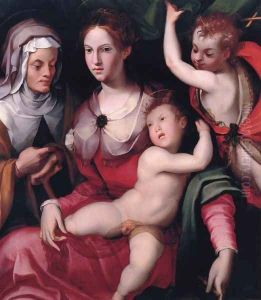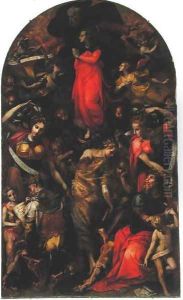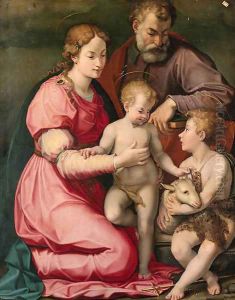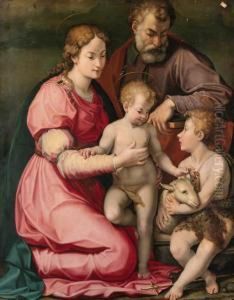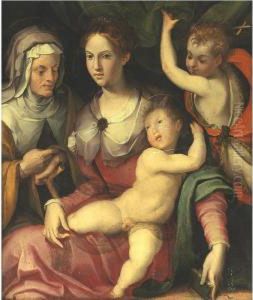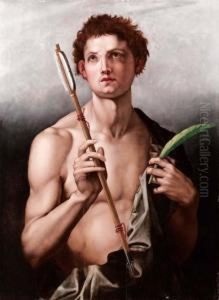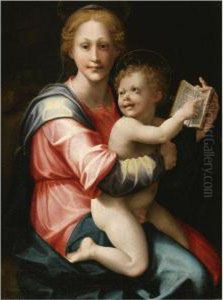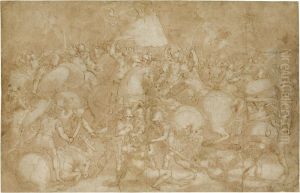Carlo Portelli da Loro Paintings
Carlo Portelli da Loro was an Italian painter of the Renaissance period, active mainly in Florence. Born around 1508-1510 in Loro Ciuffenna, a small town in the province of Arezzo, Tuscany, Portelli is often remembered for his distinctive style that combines elements of Mannerism with a unique, sometimes eccentric, use of color and composition. Little is known about his early life and training, but it is believed that he may have been a pupil or follower of Ridolfo Ghirlandaio.
Portelli's career is documented from the 1530s onwards, with his earliest known works reflecting the influence of contemporary Florentine art, particularly the work of Andrea del Sarto and Jacopo Pontormo. His paintings are characterized by their vivid colors, elongated figures, and often complex iconography, which sometimes puzzled his contemporaries.
One of Portelli's most famous works is the 'Madonna and Child with Saints' (circa 1550), which showcases his skill in creating dynamic compositions and his use of intense, almost surreal, color schemes. Another notable work is the altarpiece 'The Martyrdom of Saint Margaret' (circa 1560), located in the Cathedral of Prato, which is celebrated for its dramatic intensity and detailed execution.
Throughout his career, Portelli undertook various commissions for religious institutions and was involved in the decoration of several churches in Florence and its surroundings. Despite his contributions to Renaissance art, Portelli has not received the same level of recognition as some of his contemporaries, partly due to the eccentricity of his style and the uneven quality of his output.
Carlo Portelli da Loro died in Florence in 1574, leaving behind a body of work that continues to be studied and appreciated for its originality and insight into the Mannerist period of Italian art. His works can be found in various museums and collections in Italy and around the world, offering a glimpse into the artistic experiments of the 16th century.
